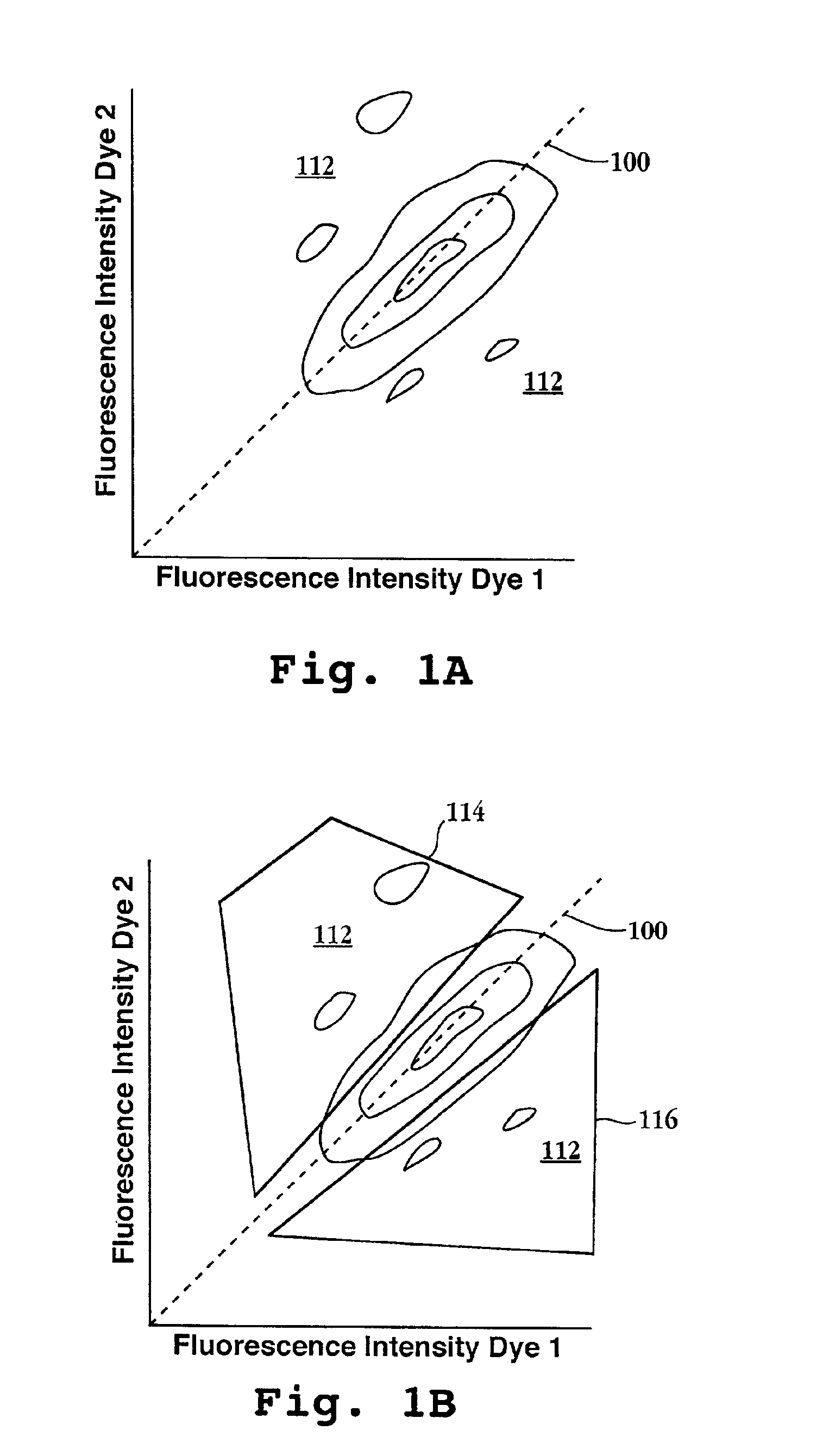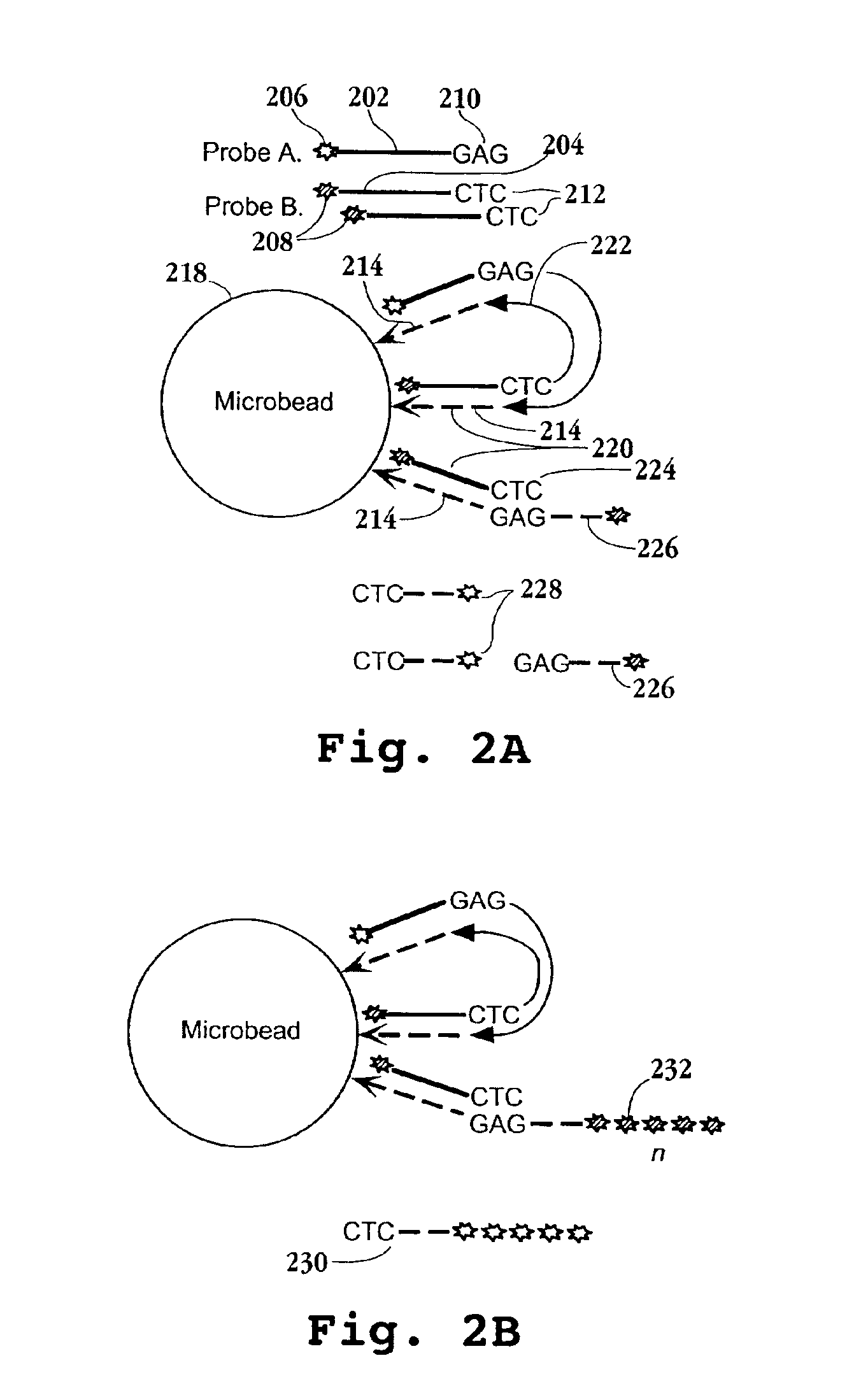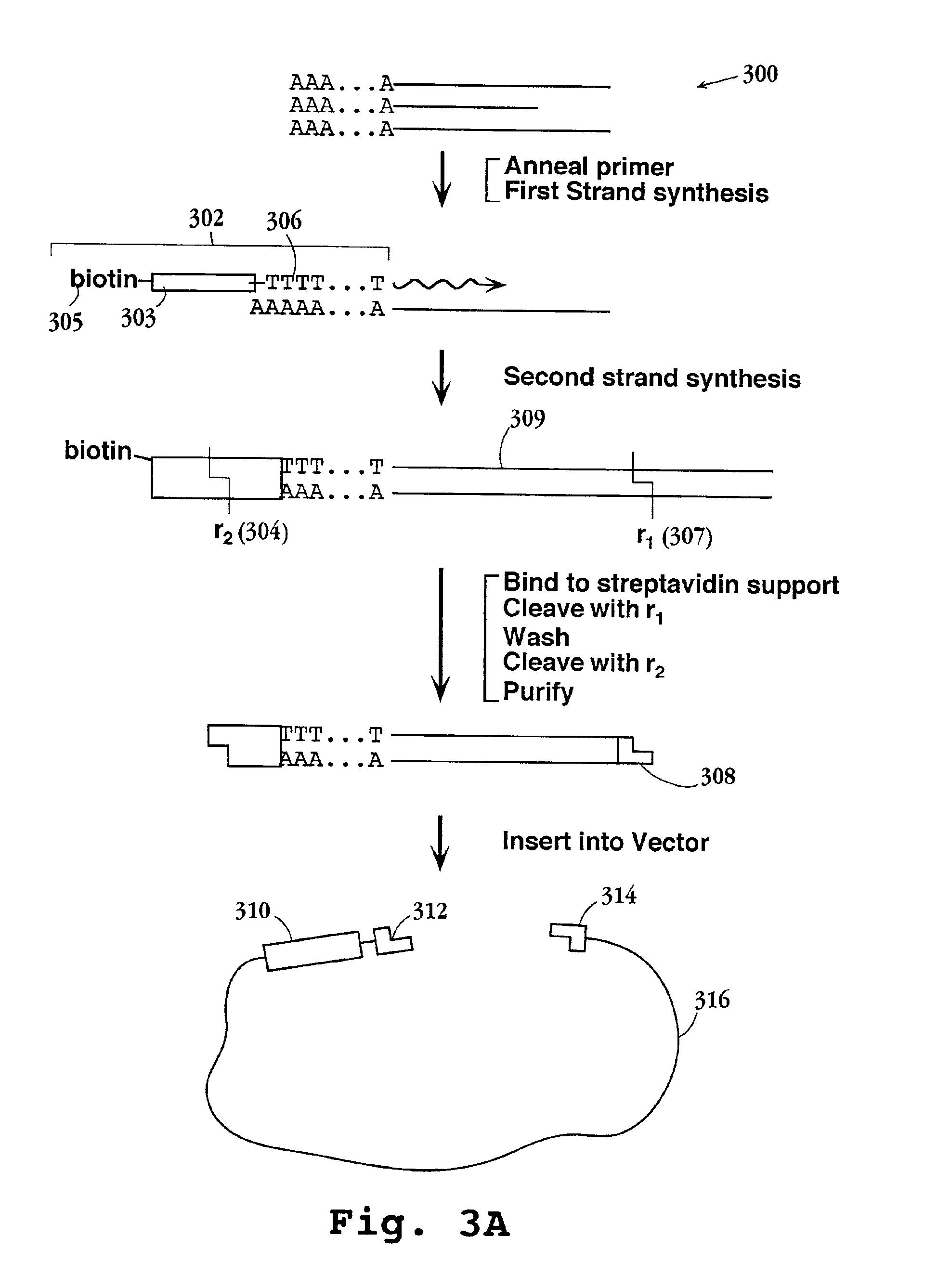Method for determining relative abundance of nucleic acid sequences
a nucleic acid sequence and relative abundance technology, applied in the field of determining the relative abundance of nucleic acid sequences, can solve the problems of limited scale of analysis, difficult to track changes in expression patterns by direct sequence analysis, and limit the widespread application of expression monitoring problems
- Summary
- Abstract
- Description
- Claims
- Application Information
AI Technical Summary
Benefits of technology
Problems solved by technology
Method used
Image
Examples
example 1
Construction of a cDNA Reference Library on Microparticles by the Use of Oligonucleotide Tags
[0147]In this example, a preferred protocol for preparing tagged reference DNA for loading onto microparticles is described. Briefly, cDNA from each of the cell or tissue types of interest is prepared and directionally cloned into a vector containing the tag element of Formula I. Preferably, the mRNA extracted from such cells or tissues is combined, usually in equal proportions, prior to first strand synthesis. mRNA is obtained using standard protocols, after which first and second strand synthesis is carried out as exemplified and the resulting cDNAs are inserted into a vector containing a tag element of Formula I, or like tag element. The vectors containing the tag-cDNA conjugates are then used to transform a suitable host, typically a conventional bacterial host, after which a sample of cells from the host culture is further expanded and vector DNA is extracted. The tag-cDNA conjugates ar...
example 2
Preparation of a Yeast Reference DNA Population Attached to Microparticles
[0171]In this example, Saccharomyces cerevisiae cells of strain YJM920 MATa Gal+SUC2 CUP1 are grown in separate rich and minimal media cultures essentially as describe by Wodicka et al. (cited above). mRNA extracted from cells grown under both conditions are used to establish a reference cDNA population which is tagged, sampled, amplified, labeled, and loaded onto microparticles. Loaded microparticles are isolated by FACS, labels are removed, and the non-covalently bound strands of the loaded DNA are melted off and removed.
[0172]Yeast cells are grown at 30° C. either in rich medium consisting of YPD (yeast extract / peptone / glucose, Bufferad, Newark, N.J.) or in minimal medium (yeast nitrogen base without amino acids, plus glucose, Bufferad). Cell density is measured by counting cells from duplicate dilutions, and the number of viable cells per milliliter is estimated by plating dilutions of the cultures on YPD ...
example 3
FACS Analysis of Microparticles Loaded with Different Ratios of DNAs Labeled with Fluorescein and CY5: Comparative Example
[0178]In this example, the sensitivity of detecting different ratios of differently labeled cDNAs by non-SRQ probe ratio methods was evaluated by constructing a reference DNA population consisting of a single clone and competitively hybridizing to the reference DNA population different ratios of complementary strands labeled with different fluorescent dyes. The reference DNA population consisted of a cDNA clone, designated “88.11,” which is an 87-basepair fragment of an expressed gene of the human monocyte cell line THP-1, available from the American Type Culture Collection (Rockville, Md.) under accession number TIB 202. The nucleotide sequence of 88.11 has a high degree of homology to many entries in the GenBank Expressed Sequence Tag library, e.g. GB AA830602 (98%). The reference DNA population, which consisted of only 88.11 cDNA, was prepared as described in ...
PUM
| Property | Measurement | Unit |
|---|---|---|
| concentration | aaaaa | aaaaa |
| concentration | aaaaa | aaaaa |
| length | aaaaa | aaaaa |
Abstract
Description
Claims
Application Information
 Login to View More
Login to View More - R&D
- Intellectual Property
- Life Sciences
- Materials
- Tech Scout
- Unparalleled Data Quality
- Higher Quality Content
- 60% Fewer Hallucinations
Browse by: Latest US Patents, China's latest patents, Technical Efficacy Thesaurus, Application Domain, Technology Topic, Popular Technical Reports.
© 2025 PatSnap. All rights reserved.Legal|Privacy policy|Modern Slavery Act Transparency Statement|Sitemap|About US| Contact US: help@patsnap.com



